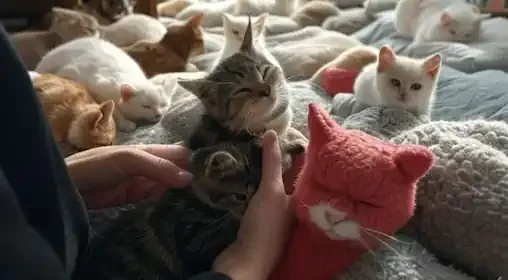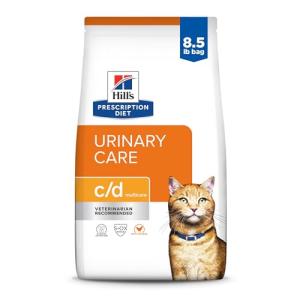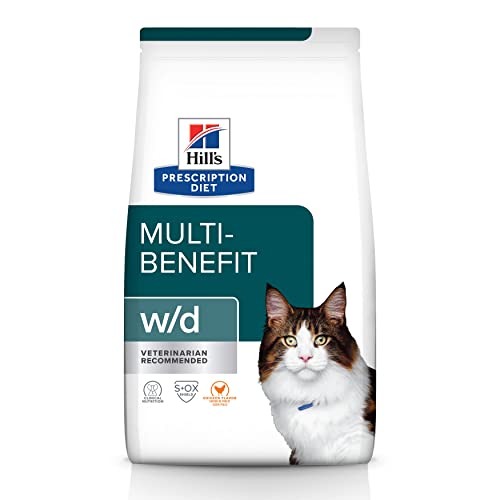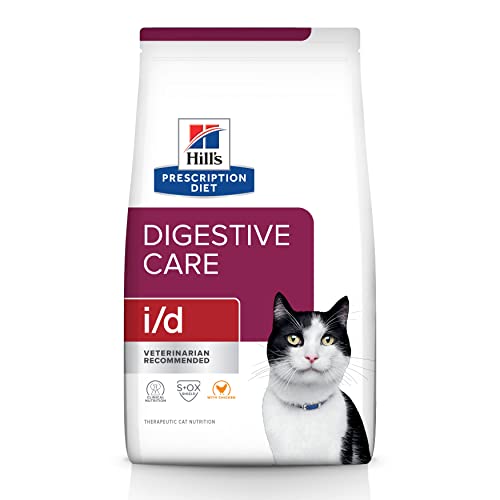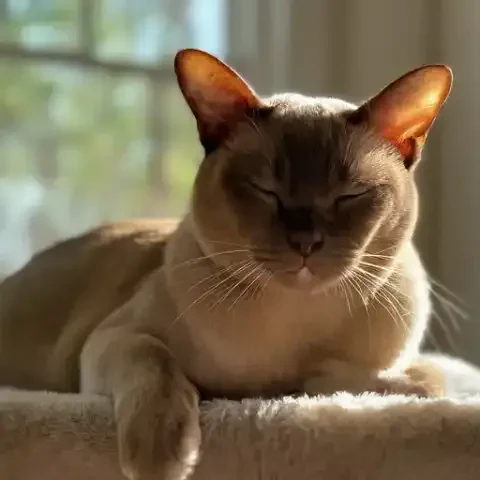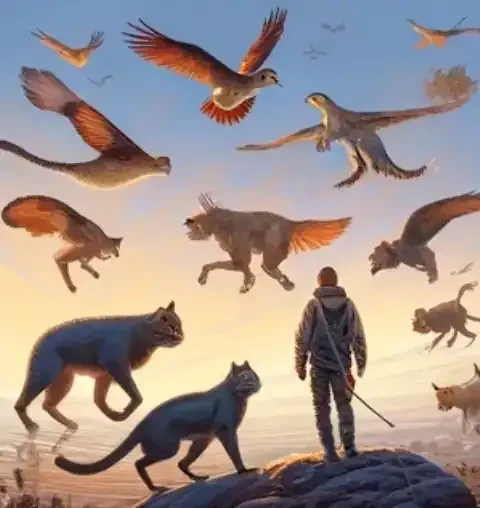Imagine countless cats, living lives unseen and unheard by most, struggling for daily survival on the unforgiving streets. These are the vulnerable felines – the strays, the abandoned, the forgotten – facing a relentless battle against hunger, the constant threat of danger lurking around every corner, and the ever-present specter of illness and disease. For these often-invisible creatures, animal rescue groups are not just organizations; they are often the only beacon of hope in a world that can feel indifferent, or even hostile, to their plight. They are the unwavering hands reaching out, the compassionate hearts offering solace, and the determined voices advocating for lives that too often go unnoticed. For these vulnerable cats, animal rescue groups are not simply a helping hand, they are often their only lifeline, their only chance at a life beyond hardship, fear, and uncertainty.
Every single year, millions of cats, each with their own unique personality and capacity for love, enter animal shelters across the country. Many of these felines, through no fault of their own, find themselves facing deeply uncertain futures. Shelter walls, while offering temporary respite, can also become places of immense stress and limited resources, and tragically, for countless cats, the shelter system is often a one-way journey. But amidst this challenging and often heartbreaking reality, a bright and unwavering beacon of hope shines powerfully: the tireless and dedicated individuals and organizations that form the backbone of animal rescue groups. These are the unsung heroes of the animal welfare world, working tirelessly, often on a shoestring budget and fueled by an unwavering compassion, to give these deserving felines a precious second chance at life, at love, and at finding their purr-fect forever homes. These groups are the guardians of the feline, the champions of the overlooked, and the architects of countless heartwarming transformations.
Animal rescue groups are more than just places; they are movements built on compassion, driven by dedication, and powered by the unwavering belief that every life, especially a small, furry, feline life, has intrinsic value and deserves to be cherished. These are typically non-profit organizations, often staffed predominantly by volunteers – ordinary people who dedicate their time, energy, and resources to extraordinary acts of kindness for animals in need. They are the people who answer the late-night calls about abandoned kittens, who meticulously trap feral cats for spay/neuter programs, who open their homes and hearts to foster cats awaiting their forever families, and who tirelessly advocate for responsible pet ownership and humane treatment of all creatures, great and small, but especially, in this instance, for cats. This article is dedicated to illuminating the essential and often life-saving work of animal rescue groups solely focused on cats. We will explore the diverse and multifaceted ways these groups are “doing good” for cats, delving into the crucial direct care they provide to felines in need, the transformative journey of rehoming and finding forever homes, and their far-reaching impact on communities through education, advocacy, and support. We will uncover the incredible scope of their compassion, their tireless dedication, and the profound and lasting positive impact they have on countless feline lives, truly acting as guardians of the feline and making a real and tangible difference in a world where so many cats are vulnerable, overlooked, and in desperate need of a helping paw.
Addressing the Feline Crisis: Why Cat Rescue Groups Are So Needed - The Scope of the Challenge
To truly understand the vital necessity of animal rescue groups dedicated to cats, we must first confront the sobering reality of the feline crisis that exists in communities across the globe. The sheer scale of cat overpopulation is staggering, a silent epidemic affecting not only the cats themselves but also communities and animal welfare systems. At the heart of this crisis lies the simple, yet profound, issue of unspayed and unneutered cats. A single unspayed female cat and her offspring can, in a shockingly short span of just a few years, be responsible for the birth of hundreds, even thousands, of kittens. This exponential rate of reproduction, coupled with a lack of widespread spaying and neutering, particularly within stray and feral cat populations, fuels a continuous cycle of overpopulation, resulting in millions of homeless cats and kittens struggling to survive. These homeless cats face unimaginable hardships. Life on the streets is a constant battle for survival, a relentless cycle of hunger, thirst, exposure to harsh weather conditions, and the ever-present threat of predators, traffic, and human cruelty. They are vulnerable to diseases, parasites, and injuries, often without access to even the most basic veterinary care. The sheer numbers of stray and feral cats can also place a strain on communities, leading to concerns about public health, nuisance behaviors, and the overall welfare of these animals.
Animal shelters, the frontline responders to the feline crisis, are often overwhelmed and operating far beyond their capacity. Intake rates for cats, particularly during kitten season, often far exceed adoption rates, leading to chronic overcrowding and stretched resources. Shelters, despite the best efforts of staff and volunteers, are simply not designed to be long-term homes for animals. The stressful environment, the constant noise and unfamiliar smells, and the sheer number of animals can be incredibly overwhelming, particularly for sensitive cats. Tragically, shelter overcrowding and limited resources often lead to the heartbreaking reality of shelter euthanasia. Euthanasia is often a necessary, albeit deeply painful, measure taken when shelters reach critical capacity and are unable to provide adequate care and housing for the sheer volume of animals in their charge. This is not a reflection of a lack of compassion within shelters, but rather a grim consequence of the overwhelming number of homeless animals and the limited resources available to address the crisis. Animal rescue groups play a crucial and indispensable role in alleviating the immense pressure on animal shelters. Rescue groups often work in close partnership with shelters, actively “pulling” cats – taking them into their own care – to prevent euthanasia due to space constraints and to offer these cats a greater chance at finding loving homes. By removing cats from overcrowded shelters, rescue groups free up valuable space and resources for shelters to focus on other animals in need, and, most importantly, provide the rescued cats with a more personalized, home-like environment where they can thrive and await their forever families. Beyond the issue of overpopulation, countless cats find themselves in need of rescue due to abandonment, neglect, or abuse. Cats are often abandoned for a variety of reasons, from owner hardship and financial constraints to changes in living situations or simply a lack of commitment from their previous owners. Abandoned cats are suddenly thrust into a terrifying and unfamiliar world, often left to fend for themselves without the skills or resources to survive on the streets. Neglected cats suffer from a lack of basic care, often deprived of food, water, shelter, and veterinary attention, leading to illness, injury, and immense suffering. Abused cats endure unimaginable cruelty and trauma, suffering physical and emotional wounds that require specialized care and immense compassion to heal. These abandoned, neglected, and abused cats are among the most vulnerable and heartbreaking cases that animal rescue groups encounter, requiring immediate intervention, extensive medical and emotional care, and a dedicated commitment to their long-term well-being.
Furthermore, animal rescue groups often become havens for special needs cats – felines with medical conditions, physical disabilities, or senior cats who are often sadly overlooked in traditional shelter settings and face incredibly low adoption prospects. Cats with chronic medical conditions, such as diabetes, kidney disease, or heart conditions, require ongoing medication, specialized diets, and dedicated care that can be daunting for potential adopters. Cats with physical disabilities, such as blindness, deafness, or limb amputations, may be perceived as “less desirable” or more challenging to care for, despite their capacity to live full and happy lives with proper support. Senior cats, often overlooked in favor of younger, more “energetic” kittens and cats, are particularly vulnerable in shelters. They may have pre-existing health conditions, require more specialized care, and are sadly often deemed less “appealing” to adopters, despite offering the immense rewards of calm companionship and quiet affection. Animal rescue groups dedicated to cats frequently specialize in or dedicate significant resources to caring for these harder-to-place felines, recognizing their inherent worth and providing them with the specialized medical care, comfortable housing, and loving attention they deserve, often becoming sanctuaries for those who might otherwise be left behind. The multifaceted crisis facing cats – overpopulation, shelter overcrowding, abandonment, neglect, abuse, and the vulnerability of special needs felines – underscores the absolutely essential and irreplaceable role that animal rescue groups play in communities. They are the safety net, the compassionate responders, and the tireless advocates for a population of animals desperately in need of help, compassion, and a second chance at a loving and fulfilling life.
Direct Care: The Hands-On Help - What Rescue Groups Do For Cats in Need
The heart of animal rescue work lies in the direct, hands-on care provided to cats in need. These groups are not just abstract organizations; they are networks of dedicated individuals actively involved in every stage of rescuing, nurturing, and rehoming felines, providing a lifeline of support and compassion to vulnerable cats at every step of their journey from hardship to healing. Rescue and intake form the very foundation of their work. A significant portion of rescue groups’ intake involves “pulling” cats from overcrowded animal shelters. As mentioned previously, shelters often face critical space constraints, and rescue groups step in to alleviate this pressure by transferring cats into their own foster-based or small shelter programs, preventing euthanasia due to lack of space and offering these cats a greater chance at adoption in a less stressful environment. Rescuing stray and feral cats from the streets and unsafe environments is another crucial aspect of their direct care. Dedicated volunteers and trappers work tirelessly to humanely trap stray and feral cats, often in challenging and unpredictable situations, bringing them into care to address their immediate needs, provide medical attention, and, whenever possible, socialize and rehome those who are deemed suitable for indoor living. In some instances, rescue groups also accept owner surrenders, taking in cats from individuals who are facing genuine hardship and are no longer able to provide adequate care for their feline companions. This provides a humane alternative to abandonment and ensures that these cats are safely transitioned into rescue care rather than being released into uncertain circumstances. For feral cat populations, Trap-Neuter-Return (TNR) programs are a cornerstone of responsible and humane management, and are frequently spearheaded by animal rescue groups. TNR involves humanely trapping feral cats, transporting them to veterinary clinics to be spayed or neutered and vaccinated, and then returning them to their original outdoor colonies. TNR not only prevents further uncontrolled breeding and population growth but also improves the lives of feral cats by reducing disease transmission, curbing nuisance behaviors associated with mating, and often providing ongoing monitoring and supplemental feeding to these outdoor colonies.
Providing comprehensive medical care is a non-negotiable aspect of animal rescue. Upon intake, cats receive immediate veterinary exams and initial care to assess their health status, identify any existing medical conditions, and address urgent needs. This often includes vaccinations to protect against common feline diseases, parasite treatment to eliminate fleas, ticks, worms, and other infestations, and initial care for any visible injuries or illnesses. Spaying and neutering is a fundamental principle of responsible animal rescue, and groups ensure that all cats adopted through their programs are sterilized before going to their forever homes. Beyond adoption, many rescue groups also operate or partner with low-cost spay/neuter clinics, extending the benefits of sterilization to the wider community and tackling cat overpopulation at its root cause. Treating illness and injury is a constant and often demanding aspect of rescue work. Rescue groups shoulder the responsibility of providing medical care for sick or injured cats in their care, often incurring significant veterinary expenses for medications, surgeries, hospitalization, and ongoing treatment for a wide range of medical conditions, from common upper respiratory infections to complex orthopedic surgeries and chronic disease management. And as mentioned, their dedication extends to specialized care for medical needs cats. Rescue groups often become experts in managing complex medical cases, providing ongoing medication administration, specialized dietary plans, supportive therapies, and a level of patient and compassionate care that is essential for the well-being of cats with chronic illnesses or disabilities. Shelter and housing are provided with a deep understanding of feline needs and preferences. Foster homes are the often-unsung heroes of cat rescue, offering a temporary, loving, and home-like environment for cats while they await adoption. Foster care is invaluable, providing socialization, reducing stress and anxiety for cats transitioning from shelters or streets, and allowing them to decompress and reveal their true personalities in a comfortable home setting. Some rescue groups also operate small shelters or sanctuaries, offering a more structured housing option. However, even in shelter settings, rescues prioritize creating a more home-like and less stressful environment than large municipal shelters, often incorporating enrichment activities, quieter housing areas, and a greater emphasis on individual attention and socialization. Regardless of whether cats are housed in foster homes or small shelters, rescue groups prioritize providing safe, clean, and comfortable housing, ensuring basic needs are met and minimizing stress in often-challenging circumstances.
Beyond the fundamental aspects of rescue and shelter, nurturing and socialization are paramount to preparing cats for successful lives in loving homes. Providing food, water, and basic needs is, of course, a fundamental element of care. Rescue groups ensure that all cats in their care receive nutritious food appropriate for their age and health needs, constant access to fresh water, clean litter boxes, and safe, comfortable shelter, attending to their most basic physical requirements with unwavering dedication. Socialization with humans and other animals is a crucial step, especially for shy, fearful, or under-socialized cats who may have had limited positive human interaction in their past. Rescue volunteers and foster families dedicate countless hours to socializing these cats, patiently building trust, teaching them to accept gentle handling, and helping them overcome fears and anxieties, preparing them to thrive in a home environment. Enrichment and play are vital for maintaining the mental and physical well-being of cats in rescue care. Providing toys, scratching posts, climbing structures, and engaging in interactive playtime keeps cats mentally stimulated, physically active, and happier while they are in rescue care, reducing boredom, stress, and behavioral issues that can arise in confined environments. And finally, underlying all the practical aspects of care, is the immeasurable value of love and compassion. Rescue volunteers and staff provide not just food and shelter, but genuine love, attention, and compassion to often traumatized and vulnerable cats. For many rescued cats, this may be the first time they have experienced consistent kindness and care, and this compassionate interaction is often the most transformative element of their rescue journey, allowing them to heal emotionally and rediscover their capacity for trust and affection.
Finding Forever Homes: The Adoption Journey - Transforming Lives Through Rehoming
The ultimate goal of animal rescue work is to find permanent, loving “forever homes” for the cats in their care, completing the transformative journey from rescue to rehoming and giving these deserving felines the chance to live happy, secure, and cherished lives as beloved family members. Adoption programs and processes are carefully designed to ensure responsible adoptions and to match cats with homes that are a truly good fit for their individual personalities and needs. Rescue groups typically have established adoption processes that involve submitting an adoption application, participating in meet-and-greets with potential cats, and often undergoing a home visit or home check to ensure the adopter’s home environment is safe and suitable for a cat. Adoption fees, while often modest compared to purchasing a cat, are usually charged to help offset the significant costs of rescue operations, including medical care, food, and shelter expenses. Each step in the adoption process serves a crucial purpose. Applications help gather information about potential adopters, their lifestyle, their experience with cats, and their ability to provide responsible long-term care. Meet-and-greets allow potential adopters to interact with cats, assess personality compatibility, and ensure it is a good match for both the cat and the adopter. Home checks further ensure that the adopter's home is safe, cat-friendly, and prepared for the arrival of a new feline family member, promoting responsible and informed adoption decisions. Matching cats to the right families is a core tenet of ethical rescue practice. Rescue groups dedicate significant effort to getting to know the personalities, temperaments, and needs of each cat in their care, and then carefully match them with adopters whose lifestyle, experience, and home environment are a good fit. Considering cat temperament, adopter experience with cats, the presence of other pets in the home, and the adopter’s lifestyle (active vs. quiet, home often vs. away often) ensures a greater likelihood of successful, long-term adoptions and minimizes the chances of cats being returned to rescue due to incompatibility. Adoption counseling and support often extend beyond the adoption day. Many rescue groups provide pre-adoption counseling, offering advice and guidance to potential adopters on cat care, behavior, and integration into a new home. Post-adoption support is also frequently offered, with rescues remaining available to answer questions, provide advice, and offer ongoing support to adopters as they navigate the joys and challenges of welcoming a new cat into their family, ensuring a smooth and lasting transition.
The joy of rehoming and witnessing a cat find their forever home is the ultimate reward for the tireless efforts of rescue groups and volunteers. Adoption is not just about placing a cat in a house; it’s about transforming lives – both feline and human. For the cat, adoption represents a second chance at a life filled with love, security, and comfort, a life far removed from the hardships of homelessness or neglect. For the adopter, welcoming a rescued cat into their home often brings immeasurable joy, companionship, and the profound satisfaction of knowing they have made a real difference in an animal’s life, gaining a loving and grateful feline companion in return. Heartwarming adoption stories are the lifeblood of rescue work, constantly reminding volunteers and supporters of the profound impact of their efforts. Anecdotes abound of shy, fearful cats blossoming into confident and affectionate companions in loving homes, of senior cats finding peaceful and cherished final chapters with devoted adopters, and of special needs cats thriving and exceeding all expectations in homes that embrace their unique needs and abilities. These stories, repeated countless times, underscore the truly transformative power of rescue and adoption, showcasing the remarkable resilience of cats and the boundless capacity for human compassion to heal and transform lives, creating ripples of goodness that extend far beyond the rescue organization itself.
Beyond Direct Rescue: Community Impact and Education - Expanding the Circle of Good
The positive impact of animal rescue groups extends far beyond the direct care and rehoming of individual cats; these organizations often become vital community resources, actively working to address the root causes of cat overpopulation and promote responsible pet ownership, expanding the circle of good far beyond their immediate rescue efforts. Spay/neuter programs and clinics are a cornerstone of responsible pet population management and a frequent focus for animal rescue groups. Recognizing that preventing unwanted litters is crucial to tackling cat overpopulation at its source, many rescue groups operate or directly support low-cost or free spay/neuter programs and clinics, making sterilization services accessible to pet owners who might otherwise face financial barriers. These programs often target low-income communities and stray/feral cat populations, directly addressing the populations where uncontrolled breeding contributes most significantly to overpopulation challenges. The community benefits of these spay/neuter initiatives are immense, reducing the number of stray animals roaming neighborhoods, decreasing shelter intake rates, minimizing euthanasia rates, and improving public health by reducing the spread of zoonotic diseases and nuisance behaviors associated with unsterilized animals. Education on responsible pet ownership is another critical community service provided by many rescue groups. Recognizing that prevention is always better than cure, rescues dedicate resources to educating the public about all aspects of responsible cat ownership, from providing proper nutrition and enrichment to ensuring consistent veterinary care and understanding the lifelong commitment involved in pet guardianship. Education efforts often take many forms, including workshops, online resources, informative websites and social media content, and community events, all aimed at empowering current and potential pet owners with the knowledge and resources to provide the best possible care for their feline companions and make informed and responsible decisions about pet ownership. Advocacy for animal welfare is another powerful way rescue groups extend their positive influence beyond direct animal care. Many groups engage in advocacy efforts at the local, state, and even national level, working to promote animal welfare legislation, strengthen animal cruelty laws, and advocate for policies that promote the humane treatment of all animals. By actively engaging in advocacy, rescue groups work to create a more just and compassionate world for animals, addressing systemic issues that contribute to animal suffering and promoting broader societal changes that benefit animal welfare on a large scale. Community outreach and support further solidify the role of rescue groups as essential community resources. Beyond direct animal care and education, rescue groups often become valuable points of contact for pet owners in their communities, offering advice, support, and sometimes direct assistance to pet owners facing challenges. This can include providing information on cat behavior and care, offering resources for low-cost veterinary care, and sometimes even operating pet food banks or assistance programs to help pet owners in financial need keep their beloved animals in their homes rather than surrendering them to shelters, strengthening the human-animal bond and supporting responsible pet ownership within the community.
How You Can Help: Becoming Part of the Rescue Effort - Ways to Support Cat Rescue Groups
The incredible work of animal rescue groups is fueled by compassion, powered by dedication, and sustained by the generous support of individuals and communities who believe in their mission. There are countless ways you can become part of the rescue effort and contribute to making a tangible difference in the lives of cats in need, regardless of your time, resources, or skills. Adoption is, perhaps, the most direct and impactful way to support rescue groups and “do good” for cats. If you are considering welcoming a feline companion into your life, please wholeheartedly consider adopting from a reputable animal rescue group rather than purchasing from a breeder or pet store. Adopting a rescue cat not only saves a life, giving a deserving feline a loving home and a second chance at happiness, but also directly supports the work of rescue organizations, freeing up space and resources for them to help more cats in need. Adoption fees are typically lower than breeder prices, and adult rescue cats often come already vaccinated, spayed/neutered, and microchipped, offering significant cost savings and peace of mind. Fostering is another incredibly vital and rewarding way to directly help rescue cats and support rescue groups. Foster homes are the backbone of many rescue organizations, providing temporary, loving, and home-like environments for cats awaiting adoption. Fostering frees up valuable space in shelters or small rescue facilities, allows cats to de-stress and socialize in a home setting, and provides rescues with invaluable information about a cat’s personality and needs in a home environment, aiding in successful adoptions. Fostering is a truly transformative experience, directly impacting a cat’s life and providing immense personal satisfaction in knowing you played a crucial role in their journey to a forever home.
Volunteering time and skills is invaluable to resource-strapped rescue organizations. Volunteer opportunities within cat rescue groups are diverse and plentiful, catering to a wide range of skills and time commitments. Cat care volunteers are essential for providing daily care at shelters or foster locations, assisting with feeding, cleaning, grooming, socializing, and providing enrichment for cats in care. Administrative volunteers are also vital, assisting with fundraising efforts, organizing events, managing websites and social media, handling adoption applications, and providing crucial logistical support to keep the organization running smoothly. Transport volunteers play a critical role in transporting animals to and from veterinary appointments, adoption events, or foster homes, ensuring cats receive timely care and reach their destinations safely. And adoption event volunteers are crucial for showcasing adoptable cats at community events, engaging with potential adopters, and helping to find forever homes for waiting felines. Donating, in any form, is always deeply appreciated and directly supports the often-significant financial needs of rescue groups. Financial donations, no matter the size, directly fund vital aspects of cat care, including veterinary expenses, medications, food, litter, and shelter supplies. Donations of supplies, such as cat food, litter, blankets, toys, and cleaning supplies, directly reduce the operational costs of rescues and ensure cats in care have the resources they need. In-kind donations, such as professional services (photography, graphic design, website development), or donating items for fundraising auctions or raffles, can also be incredibly valuable and help rescues maximize their limited budgets and resources. Spreading awareness is a powerful, and often free, way to support rescue groups and amplify their message. Share rescue group information with your friends, family, and community. Share adoption posts on social media, helping to connect adoptable cats with potential forever homes. Advocate for responsible pet ownership within your community, promoting spaying and neutering, responsible pet care, and the importance of choosing adoption. Every share, every conversation, every act of awareness, helps to expand the reach of rescue groups and contribute to a more compassionate and informed community for cats.
Conclusion: The Ripple Effect of Rescue - Celebrating the Goodness and Inspiring Action
Animal rescue groups are far more than just organizations; they are true lifelines for countless vulnerable cats, tireless engines of compassion, and unwavering beacons of hope in a world where feline suffering often goes unseen and unheard. The multifaceted “good” they generate is immense and far-reaching, extending from the direct, life-saving care they provide to individual cats, to the transformative journey of rehoming and creating loving families, to their wider community impact through education, advocacy, and support. They address the immediate crisis of cat homelessness while also tackling the root causes, creating a ripple effect of positive change that benefits both individual animals and entire communities. Behind every rescued cat, every successful adoption, every spay/neuter clinic, and every educational outreach event are the dedicated and often-unsung heroes of animal rescue – the volunteers, the foster families, the staff, and the donors who pour their hearts, souls, time, and resources into this vital work. Their tireless efforts, fueled by deep compassion and an unwavering commitment to feline welfare, make the seemingly impossible happen every single day, transforming lives, one feline paw print at a time. It's now our turn to act. Be inspired by their dedication, be moved by their compassion, and consider how you can become part of the rescue effort. Whether through adoption, fostering, volunteering, donating, or simply spreading awareness, every act of support, no matter how small it may seem, contributes to a brighter future for cats in need and strengthens the vital network of animal rescue groups who are working tirelessly to create a more humane and compassionate world for our feline companions. Animal rescue groups remind us, with every rescued cat, every successful adoption, and every act of kindness, that every cat, regardless of circumstance, regardless of background, regardless of age or perceived “imperfection,” deserves a chance at a loving home, a safe haven, and a happy, fulfilling life. Let us all play our part, however we can, in helping these incredible groups continue their absolutely vital work – for the unwavering love of cats, for the promise of second chances, and for the profound and lasting ripple effect of goodness that animal rescue creates in our communities and in the lives of countless deserving felines.
